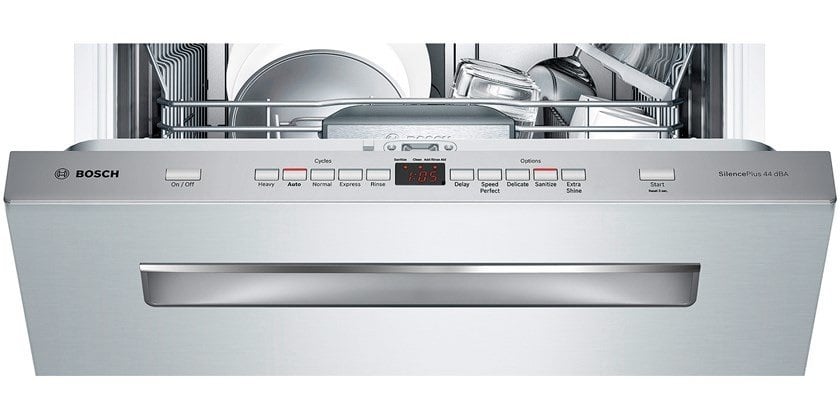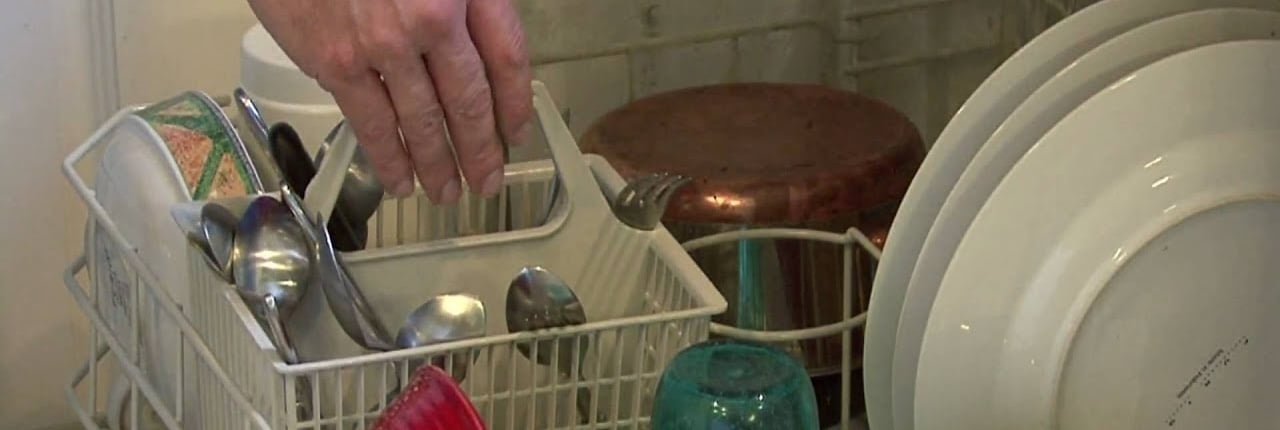How to Use Dishwasher for Dummies
A dishwasher is an extremely useful home appliance if you know how to use it properly to your advantage. Handling it is simple and quick even for a beginner. Here are some helpful tips on how to leverage a dishwasher correctly and easily.
Loading the Dishwasher
It is no rocket science to load the dishwasher, although there are some nuances you should remember. Here is a step-by-step guide:
1. Wash the dishware – this does not mean you have to clean them up completely, because this is a job for your dishwasher. You simply need to rinse your tableware with water to get rid of food pieces and various substances. This will help you keep the dishwasher clean and working well for a long time;
2. Load the lower rack – this one is suitable for plates, various pots and bowls and overall larger tableware. There is usually a separate compartment for knives, forks, spoons and things like that. Make sure to put each piece into a designated spot. They should not interfere with moving parts of the dishwasher such as spray arms for example.
3. Load the upper rack – this rack is designed to hold cups, mugs, glasses and so on. Place this type of tableware upside down, so that the water could wash the inside and drip down afterward. Be careful with wine glasses and other fragile pieces, because they could break easily.
4. Fill up the detergent slot – it is important to use a correct quantity of detergent. Too little might be insufficient for cleaning all the dishes, while too much might leave spots on the plates. Read about the necessary amount in the manual for your dishwasher model or on the cleaning agent packaging. Keep in mind that if you have hard water, it might require a special type of detergent.
5. Load the plastic pieces carefully – the dishes and parts made of plastic are light enough to move during the washing cycle. Load them carefully and make sure they will not slide or move easily.
6. Be mindful of the dishes you load into the dishwasher – some dishes are not supposed to go into the appliance and should be cleaned manually. This includes wooden, silver, nonstick and some other types of tableware. Plates with designs drawn on them can also be unsuitable because sometimes the designs can come off completely. It is also better to wash expensive tableware manually to be on the safe side.
Running the Dishwasher
All home appliances come with a manual that describes all the possible programs for your specific model.
In most cases, your normal dishes that are left after day-to-day use will be fine with the lightest program. Such a washing cycle should be able to take care of the dishware left after lunch or dinner perfectly.
If you want to wash dishes left after cooking greasy foods or baking, you might need to set your device up to a more powerful program. Try the programs starting from the lightest one to see which one suits you the best.
The great tip is to leave your dishes dry naturally if it is possible. In case you are in no hurry, simply open the dishwasher after it finished washing and let the plates air-dry. This will help you save some electric energy.
Although, if you need your dishes to be clean and dry quickly, set your dishwasher to drying as well.
Cleaning the Dishwasher
1. Wash the exterior – use a sponge or a towel and a cleaning agent to wipe the exterior of your dishwasher carefully. Clean it from top to bottom from any spills, dirty stains and fingerprints;
2. Wash the filter – each dishwasher has a filter that separates all debris and food scraps. It is crucial to clean it regularly for the dishwasher to operate properly. The filter is located at the bottom of the device and should be easily removable. Remove it and wash it in your sink. Clean it carefully from all the debris attached and put it back into its place;
3. Clean the racks – remove the racks and other attachments and clean them as well. Sometimes food and detergent can stick to those parts, and it is important to wash them from time to time;
4. Clean the inside of the dishwasher – firstly, you should clean out the leftovers and debris manually with a towel. After that, you can run the device with a cup of vinegar inside. This should help to clean the interior completely and get rid of possible smell.
Maintaining Tips
There are many extra ways to maintain your dishwasher. Some of them are extremely helpful to prevent it from breaking. Here are some useful tips that will help your dishwasher work better and longer:
- Clean the drain of your appliance – pieces of food and other foreign objects often get stuck in the drain. Sometimes dishes break and the shards fall in there, as well as some other particles. Make sure to clean the drain from debris and anything stuck in there at least once a month;
- Clean the spray arms – depending on the model of your device, you will have several spray arms. They are responsible for washing the dishes with water. Sometimes the openings on the arms, which deliver water, can become stuffed. You can clean them carefully with a toothpick or little brushes in order to make the water flow better
- Use the dishwasher regularly – the regular use will prevent debris from building up inside the machine. If you leave your home for a vacation, run the dishwasher empty before starting to use it again. However, empty cycles with vinegar are helpful in any case
- Do not load too many dishes at once – each plate and cup has a designated spot. Filling the dishwasher with too many dishes can result in all of the tableware coming out still dirty. Moreover, it could wear off some parts of the dishwasher.
-
1
 Call Us
Call Us -
2
 Get a Quote On-Site
Get a Quote On-Site -
3
 Get Your Appliance Fixed
Get Your Appliance Fixed -
4
 Visa | Cash | MasterCard
Visa | Cash | MasterCard -
5
 Enjoy Your Day
Enjoy Your Day






